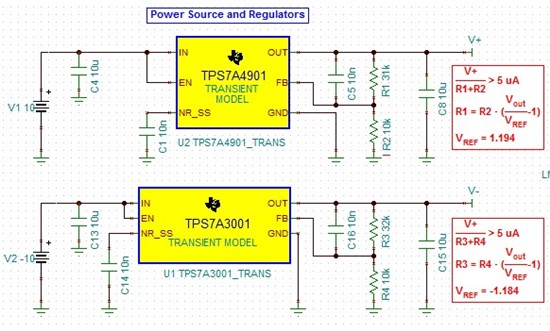Dear all:
Recently I am trying to use TPS7A3001/TPS7A4901 for providing clean and stable +5 and -5 V power for my PCBs. I am aware that the output voltage is adjustable by changing the values of external resistors which is connected between the OUT pin and GND. After reading the datasheet, I have some questions:
1, basically I know one rule is that the current should be greater than 5 uA. But is there any criteria for selecting proper values of resistors? e.g. I can choose two resistors of 10 K and 20 K or 100 K and 200 K to get the same desired voltage, what is the difference between these two selections?
2, in the datasheet of these two devices, I found: it is recommended that the board be designed with separate ground planes for IN and OUT, with each ground plane connected only at the GND pin of the device.
While in the datasheet of the evaluation module TPS7A30-49EVM-567, I found the ground planes of IN and OUT are not separate from each other.
I am wondering which rule I should obey when designing my PCBs? And why
I will appreciate if anyone could help me, many thanks in advance.
Cheers,
Ruo


